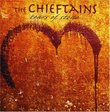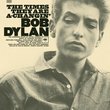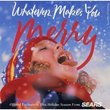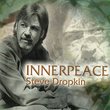| All Artists: Ondar Title: Back Tuva Future Members Wishing: 0 Total Copies: 0 Label: Warner Bros / Wea Original Release Date: 1/12/1999 Release Date: 1/12/1999 Genres: International Music, Pop, Rap & Hip-Hop, Rock Styles: Far East & Asia, Pop Rap Number of Discs: 1 SwapaCD Credits: 1 UPC: 093624713128 |
Search - Ondar :: Back Tuva Future
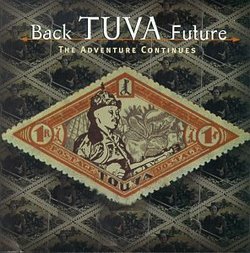 | Ondar Back Tuva Future Genres: International Music, Pop, Rap & Hip-Hop, Rock
The ancient, multitone singing technique from Tuva (which lies just north of Mongolia) is relocated to the heartland of America on Back Tuva Future, a CD recorded by Nashville honchos Jim Ed Norman, David Hoffner, and Ralp... more » |
Larger Image |
CD DetailsSynopsis
Amazon.com The ancient, multitone singing technique from Tuva (which lies just north of Mongolia) is relocated to the heartland of America on Back Tuva Future, a CD recorded by Nashville honchos Jim Ed Norman, David Hoffner, and Ralph Leighton. With guest appearances from Willie Nelson, Randy Scruggs, and Bill Miller, these 10 tracks take on the shape of a multicultural hoedown in more ways than one. Curiously, the country ethos and Tuvan tradition have much in common--herding livestock, horses, and (of course) pretty women--so the subject matter is harmonious. The combination of Ondar's guttural, polyphonic throat singing and country music is at first distracting but eventually gets carried along by the enthusiasm of the participants. There are also a couple of hip-hop/rap tracks and occasional New Age reference points, so you can assume that this genre bender is aimed at the adventurous listener rather than the anthropologic purist. --Derek Rath Similarly Requested CDs
|
CD ReviewsTuva Mixed and Mashed Jim Allan | Toronto, ON Canada | 01/03/2001 (4 out of 5 stars) "A lot of people really can't handle field recordings or raw international music.Too rough for them perhaps, too inaccessible to where they stand at the moment. And you can't really take this kind of uncouth noise seriously on its own can you? You have to ADAPT it. You have to DO SOMETHING with it! A century ago the answer was to adapt (and usually water down) any folk or foreign music you liked into symphonic form. As is still done.So David Hoffner has created a pop mix of Ondar's Tuvan throat-singing with added background instrumentals, and bits of Willie Nelson, Randy Scruggs, and physicist Richard Feynman recounting stories. Golly kids, you can even send in for a free SECRET DECODER CARD for Tuvan Throat-singing and for Feynman diagrams! And there's a neato, keeno hidden track on the CD (giving a Dummy's Guide to Tuvan throat-singing and SECRETS of how the album was produced and where some of the background noises came from). So COOL! Or perhaps "KOOL!"?I tend to be a bit of field recording snob. Yay Seamus Ennis, Peter Kennedy, Alan Lomax, Eduard Alekseev and so forth! And I'd already come across other records of Tuva throat-singing which I'd enjoyed.But I can't help liking this silliness also. Let's have FUN WITH MUSIC, kids! The background music and noises emphasize or create links with other music sounds, often pop music. Why not? The similarities of style or emotion were there already waiting to be pointed out. Simultaneous punctuation and interpretation by the background music does more than pages of written critique would, with probably no more distortion. But the album is not a teaching album per se. David Hoffner obviously intended the album to be zestful, interesting, entertaining, and artistic on its own merits, having fun with Ondar's talent, but not at the expense of it. He enjoys Ondar's throat-singing very much and wants to tell everyone. Yet _Back_TUVA_Future is designedly Hoffner's album as much as Ondar's, so the result is a fusion intended to enhance Ondar's throat-singing in ways that Hoffner sees as true to Ondar.For me it works. I've played _Back_TUVA_Future_ many times! It's fun! It's exciting! It never lags! It points ways to listen to unenhanced throat-singing. It does what David Hoffner wanted it to do. I would probably have enjoyed it even more had it been my introduction to Tuvan music. This creative mix certainly doesn't hinder enjoyment of more traditional presentations of Tuvan music, nor does a liking for the unadorned Tuvan music prohibit a taste for Hoffner's smorgasbord. The kind of enjoyment is just different, in part. If anything, _Back_TUVA_Future_ has increased my appreciation of the unenhanced music." Wonderfully different and familiar at the same time. 10/20/1999 (5 out of 5 stars) "My system was in shock at first but it didnot take long for me to embrace it totally! My teenagers want to take the CD to a school dance and play Tuva Groove and Kargyraa Rap. I almost cried listening to Where Has My Country Gone done by Ondar and Willie Nelson. This is not your traditional Tuvan music! There is also a hidden 12 th track on this disc. Its wonderfully insightful and funny. I Love this disc! I understand this is the way the shamans sang in Siberia. ENJOY" Don't Buy This -- It Will Infect Your Brain! Andrew S. Beals | Redwood City, CA USA | 10/31/2002 (5 out of 5 stars) "Last week in a fit of selfish consumerism, I picked up a copy
of "Back Tuva Future". It's a disc made from studio recordings of Kongar-ol Ondar's Tuvan throat singing & "banjo" [not unlike a samishen] playing, several brand-name performers working with him, and old recordings of Richard Feynman telling stories and drumming. It's as much a testament to the vision of David Hoffner's producing and mixing skill as much as it is to the excellence of the raw material he started with. After playing it over and over again during my commute for the past week, it seems more like a concept album from the seventies than a mere collection of songs that happened to be ready to be pressed at the same time. It hangs together well with one piece leading to the next, even though the musical styles are spread all over the map, including a rap number by Ondar.It's infectious fun music, and if I wasn't driving, I'd probably be dancing. As it is, I've a running soundtrack in my head of some of Ondar's banjo playing and it's been three hours since I left the CD in the truck. Also as a result, I've been trying to imitate some of the sounds Ondar makes, seeing if I can figure out this throat-singing thing for myself.Five of five stars from me." |

 Track Listings (12) - Disc #1
Track Listings (12) - Disc #1